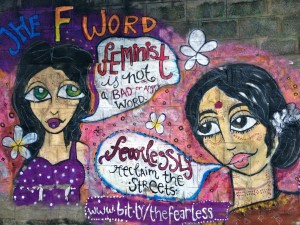
Katelyn Lamb, Content & Assistant Editor
It all started with a bus. The infamous December 2013 rape case in New Delhi, India sparked controversy and adamant protest across the nation and international community, bringing to light the problem of rape and sexual violence in the country. The woman in the New Delhi incident was a 23-year-old student who was fatally gang raped on a moving bus in the nation’s capital. The brutality of this attack, paired with the fairly secure, middle class environment it took place in, outraged both Indians and observers worldwide.
While gender-based violence and harassment existed long before last December, the Delhi case appears to have opened the floodgates for the protest and reporting of problems such as rape, honor killings and molestation. According to an article in the Washington Post, many women do not speak out against violence because they have no support, with family and law officials too prone to ignoring complaints or ostracizing women who are victims of rape. In fact, women who suffer from rape or abuse may be labeled as “morally loose” if they speak out about their attack, making tasks such as securing a job or marrying more difficult.
Since the incident in Delhi, many groups in India are working to make life better for women. In March 2013, a new set of laws promoting harsher punishments for sexual assault was passed in hopes of curbing the high rate of gender-based violence.
Despite the new set of legislation, public outrage and the work of activists, the problem of rape and harassment persists. Another article from the Washington Post blames the continued presence of sexual violence in India on issues such as the low status of women, lack of female police officers, poorly operating judicial systems, an acceptance of domestic violence and stigmatization of victims. Additionally, the large population and gender disparity in the country leave many young men unmarried, unemployed and unoccupied, heightening the risk of rape. These factors, regardless of recent attempts on the contrary, continue to create an attitude of entitlement and objectification towards women in India. One study, cited by the New York Times, notes that 73% of rape perpetrators claim “entitlement” as their motivation while 59% of men claim to have raped in the pursuit of entertainment.
Interestingly, the problem of rape and violence is not experienced exclusively by native Indian females. Indian women have long suffered and continue to suffer violence from their countrymen and attacks on foreigners, especially Westerners, have traditionally been extremely rare. Recently, though, foreign visitors have been victims to the dark side of tourism. In 2013 alone, a Swiss, British and American were all victims of rape while visiting northern India. In addition, earlier this month, a Danish woman was gang-raped in Delhi, making the attacks on foreigners a central issue in international discussion. Due to this progressively common violence, India saw a 35% drop in female tourists in early 2013, a crucial economic area for the country.
It appears that women are increasingly reporting harassment and rape crimes, a crucial first step if the nation is to protect its mothers and daughters. With a traditional preference for sons and privileging of men in society, progress for India will require a change of heart as well as a change of law.